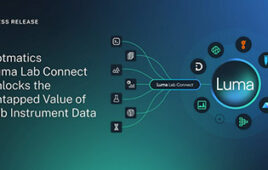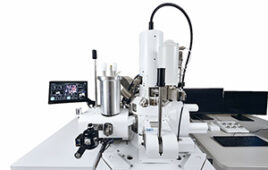Beakers are a common type of laboratory glassware used for preparing and holding solutions and other samples. A beaker is generally a cylindrical container with a flat bottom and an open top. This shape is similar to a drinking beaker. The straight cylindrical sides of a beaker distinguish it from a flask, which has sloping sides in a conical or bulb arrangement. However, stackable beakers may have slightly sloping sides to allow them to stack. Beakers typically have a spout to facilitate pouring and often also graduations to give an approximate indication of the volume of liquid contained.
Beakers are used in most chemical, biological, clinical and industrial laboratories. They are also used in many other industrial situations where testing is carried out. They provide a convenient easily used container to store and mix liquids.
The ISO 3819 standard divides beakers into three basic shapes: low-form; tall-form and thick-walled. Low-form beakers have a height/diameter ratio of around 1.4 and standard volumes ranging from 5 mL up to 10 L. High-form beakers have a height/diameter ratio of approximately 1.9 and standard volumes ranging from 50 mL to 5 L. Thick wall-walled beakers are the same shape as low-form beakers but have slightly thicker walls, increased from 1.1 mm to 1.2 mm for a 250 mL beaker. ISO 3819 also stipulates that beakers must have a spout, be resistant to thermal shocks of 160°C, and be inscribed with the capacity, vendor and type of glass. Graduations are optional.
The most common shape is the low-form beaker, also known as a Griffin beaker. These beakers are used for holding liquids, preparing solutions and performing reactions. Flat beakers called crystallizers are not covered by ISO 3819 and may be used for crystallization or hot-bath heating.
Beakers are typically made from borosilicate glass, which has good thermal shock resistance while also being inert, transparent and easily cleaned. Plastic and metallic beakers are also used for certain applications.





Tell Us What You Think!